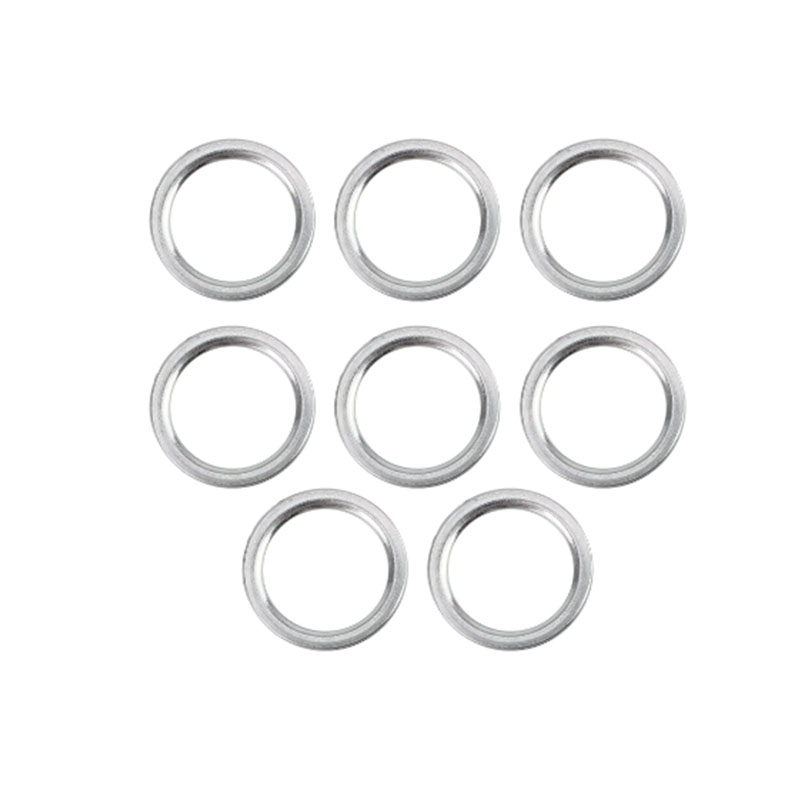Understanding Shaft Oil Seals and Their Importance in Machinery Maintenance
Understanding Shaft Oil Seals Importance and Applications
Shaft oil seals play an essential role in various mechanical systems, serving as vital components designed to prevent the leakage of lubricants and the ingress of contaminants. Their importance spans across multiple industries, including automotive, manufacturing, and aerospace, ensuring smooth operation and longevity of machinery.
What is a Shaft Oil Seal?
A shaft oil seal, commonly referred to as a lip seal, is a device used to contain lubricants within a housing, while also preventing external contaminants from entering. Typically made of rubber, polyurethane, or other elastomeric materials, these seals feature a circular cross-section that fits tightly around the shaft, creating a secure barrier. The design typically includes a dynamic lip that interacts with the rotating shaft to maintain a seal without heavy friction, alongside a static lip that remains with the housing.
How Shaft Oil Seals Work
The functionality of a shaft oil seal relies on the principle of creating a barrier between two spaces. When installed correctly, the lip of the seal presses against the shaft, forming a tight fit that holds oil in place while blocking dirt, dust, and moisture from entering. This dual protection is crucial in applications such as engines, gearboxes, and pumps, where the performance of lubricants is vital for reducing wear and tear.
Importance of Shaft Oil Seals
1. Preventing Oil Leakage The primary function of a shaft oil seal is to prevent the loss of lubricants, which is crucial for maintaining optimal performance in machinery. Oil leakage can lead to inadequate lubrication, resulting in increased friction, overheating, and ultimately, equipment failure.
2. Protecting Against Contaminants Contaminants such as dirt, dust, and moisture can cause significant damage to mechanical components. Shaft oil seals act as barriers that protect critical parts from deterioration, extending the lifespan of the equipment.
3. Enhancing Efficiency By reducing friction and preventing oil loss, shaft oil seals contribute to the overall efficiency of a machine. This enhances the performance and enables machinery to operate at optimal conditions, resulting in better energy consumption and cost savings.
shaft oil seal

4. Reducing Maintenance Costs Regular oil leaks can lead to extensive maintenance issues and repairs. By ensuring that lubricants remain contained, shaft oil seals help minimize the frequency and cost of maintenance, allowing for more consistent production levels.
Applications of Shaft Oil Seals
Shaft oil seals are widely used in various applications, including
- Automotive In vehicles, oil seals are found in engines, transmissions, and differentials, where they help maintain proper lubrication and protect against external contaminants. - Industrial Machinery Many types of machines use shaft oil seals, such as pumps, compressors, and conveyors, to ensure longevity and performance under heavy loads.
- Aerospace In the aerospace sector, oil seals are critical for maintaining fluid integrity in engines and hydraulic systems, where their failure can have catastrophic consequences.
Choosing the Right Shaft Oil Seal
When selecting a shaft oil seal, several factors must be considered. The size of the shaft, the operating temperature, the type of lubricant, and environmental conditions all play a role in determining the most suitable seal type. It's essential to consult with manufacturers or industry professionals to ensure the best fit for specific applications to achieve optimal performance and reliability.
Conclusion
Shaft oil seals are small yet powerful components that contribute significantly to the functionality and reliability of various mechanical systems. Their ability to prevent oil leakage and protect against contaminants makes them an indispensable part of machinery across many industries. As technology evolves, so too do the materials and designs used for oil seals, ensuring that they meet the increasingly demanding requirements of modern applications. Understanding their importance and proper selection is crucial for anyone involved in machinery maintenance and engineering.
-
Understanding the Front Main Engine Seal: Purpose, Maintenance, and Installation
News Jul.29,2025
-
Understanding O-Rings and Seal Rings: Types, Applications, and Custom Solutions
News Jul.29,2025
-
Understanding Crankshaft Oil Seals: Rear Seals, Pulley Seals, and Their Role in Engine Integrity
News Jul.29,2025
-
The Importance of Front and Rear Crankshaft Seals in Engine Performance and Oil Management
News Jul.29,2025
-
Crank Oil Seals: Functions, Types, and Cost Considerations in Engine Maintenance
News Jul.29,2025
-
A Comprehensive Guide to O-Rings and Seals: Types, Materials, and Global Applications
News Jul.29,2025
-
Mastering Diesel and Performance Engine Maintenance: A Guide to Critical Oil Gaskets
News Jul.28,2025
Products categories















